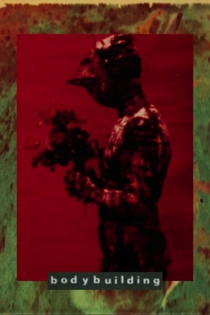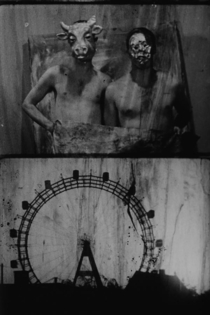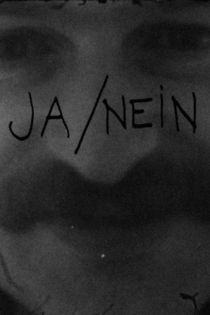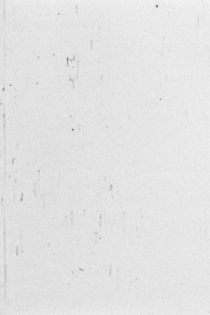
Ernst Schmidt Jr.
1938 - 1988Wienfilm 1896-1976
Ernst Schmidt Jr.
Friedrich Achleitner, Marc Adrian
This film is a kind of anthology about Vienna, from the invention of film to the present day. The aim is to break down the usual clichéd "image of Vienna" such as that found in the traditional "Vienna Film" by juxtaposing documentary footage, newly shot material and subjective sequences created by various artists. Individual, self-contained sections of the film gain new meaning within the context of historical material. Familiar sites appear estranged when edited together with historical scenes. Other scenes appear like a persiflage or satirical. The film does not incorporate any commentary whatsoever. It is a collage of diverse materials aimed at conveying a distanced image of Vienna to the viewer
ViennaFilm 1896-1976

Bodybuilding
Ernst Schmidt Jr.
Otto Muehl
In May 1965, Ernst Schmidt Jr. films the Otto Muehl performances Rumpsti Pumsti and Body Building. In this period Muehl conceives his actionist works almost exclusively for photographic and film documentation. The necessity of a spontaneous confrontation with the public, which plays a major role in Muehl's later actions, does not apply to these works.
Bodybuilding

Kunst & Revolution
Ernst Schmidt Jr.
Günter Brus, Otto Muehl
‘Kunst & Revolution is a documentation on the famous action known as the “filthy uni mess”, which led to a jury court trial. I only had a few metres of film with me and they were quickly spent, but still the film gives one a rough impression of the events. As a whole mythology quickly arose around the event, I altered the material to counteract this effect (through repetition, and adding other material, for instance from a film about keeping dogs, and my own leftover footage from the Muehl action number 54 ‘Im Freudenauer Wasser’).’ In film 16 of his anthology Ernst Schmidt Jr. documented the actions of Günter Brus, Otto Muehl, Peter Weibel and Oswald Wiener.
Kunst & Revolution

Schnippschnapp
Ernst Schmidt Jr.
This film has two parts. In the first part, the film material is on 8mm uncut film, so that in the 16mm projection a 4-fold film can be seen. In the second part of the film, the 16mm film is shown in full size, that means the picture is now enlarged four times its size. I drew over the film after the fact, and abstracted it in many different ways. (E.S.jr.)
Snip, Snip

Denkwürdigkeiten eines Nervenkranken, Teil 3
Peter Tscherkassky, Ernst Schmidt Jr.
Christian Ludwig Attersee, Sabine Groschup
On the 28th of October 1884 Daniel Paul Schreber, candidate of the National Liberal Party in Chemnitz, suffered a heavy defeat at the elections of the German Reichstag. He was taken up in the mental clinic of the Leipzig University soon afterwards. To his rehabilition he wrote an extensive piece of work, "Denkwürdigkeiten eines Nervenkranken" (Memoirs of My Nervous Illness), which was published in 1903 and led to his temporary dismissal. Hereby Schreber became the most quoted psychiatric patient in scientific literature. The third part was realized by Peter Tscherkassy based on a concept by Ernst Schmidt Jr.
Memoirs of My Nervous Illness, Part 3

Steine
Ernst Schmidt Jr.
Steine (Stones) is a documentary film on a sculptorsŽ symposium in St. Margarethen, Burgenland. Behind this short description of content lies one of the most intelligently filmed and concepted documentary films in the history of Austrian film. The date of the last showing of this film could not be reconstructed.
Stones

Gertrude Stein hätte Chaplin gerne in einem Film gesehen, in dem dieser nichts anderes zu tun hätte, als eine Straße entlang und dann um eine Ecke zu gehen, darauf die nächste Ecke zu umwandern usw. von Ecke zu Ecke
Ernst Schmidt Jr.
A reconstruction of the "concept film," which Gertrude Stein ("a rose is a rose is a rose") suggested to Charlie Chaplin in the 1920s. (E.S.jr.)
Gertrude Stein Would Have Liked to Have Seen Chaplin in a Film Where He Would Have Nothing Other to Do Than Walk on the Street and Then Go Around a Corner, and Then Around the Next Corner, etc. From Corner to Corner

Filmreste
Ernst Schmidt Jr.
Material actions: Otto Muehl. Montage of left-over film material from film scraps, amateur films, film leaders, recordings of material happenings, etc. Edited according to an exact plan (60 blocks of 10 takes each), then largely drawn over. My most destructive film, the "model for a futuristic newsreel." (E.S.jr.)
Film Scraps

Denkakt
Ernst Schmidt Jr.
This is a portrait of Peter Weibel, and at the same time a reflection on the medium film. As Peter Weibel looks silently into the camera (and thus to the audience) his own difficult text on the subject "Nimm eine Handvoll Zelluloid" ("Take a handful of celluloid;" published as Werkstatt Blatt 3, ed. Gottfried Schlemmer) is heard in his own voice. Due to the complexity of human language and the imperfection of the human ear, this linguistic information can only be imperfectly communicated to the audience. A film about the difference between cinema and literature. (E.S.jr.)
The Act of Thinking




